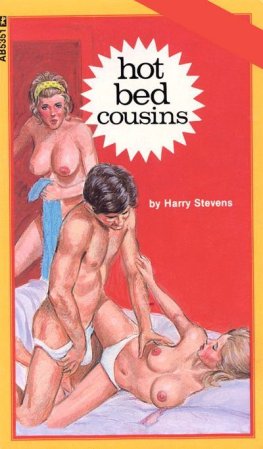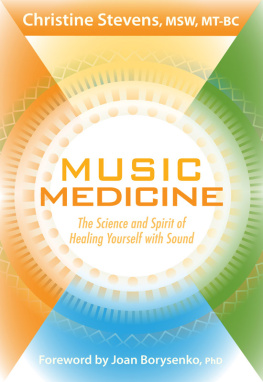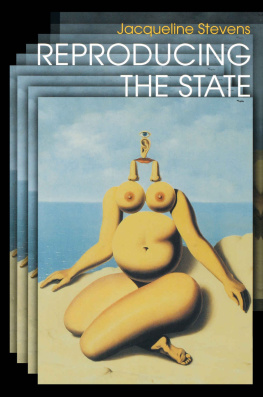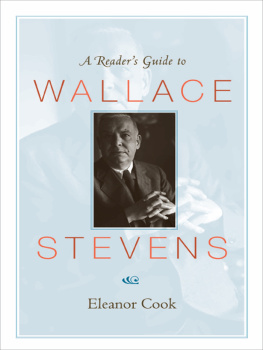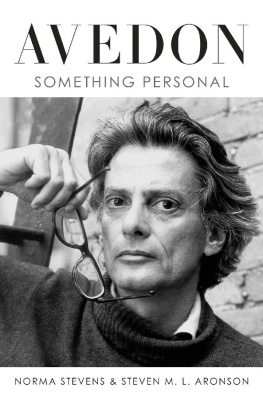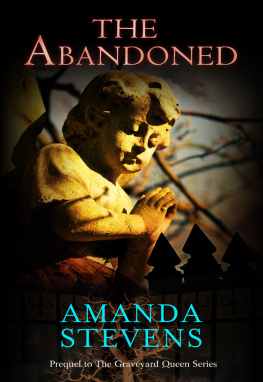Poetry and Poetics after
Wallace Stevens
Poetry and Poetics after
Wallace Stevens
Edited by
Bart Eeckhout and Lisa Goldfarb
Bloomsbury Academic
An imprint of Bloomsbury Publishing Inc

The authors would like to thank the following copyright holders for their kind permissions to reproduce the works indicated below:
Excerpt from The House from Anterooms: New Poems and Translations by Richard Wilbur. Copyright 2010 by Richard Wilbur. Reprinted by permission of Houghton Mifflin Harcourt Publishing Company. All rights reserved.
Excerpts from Ideas of Disorder at Torquay and On the Impossibility of Translation from Selected Poems by Nicholas Moore reprinted by permission of Shoestring Press.
Excerpt from With a Cornet of Winkles from New Collected Poems by David Gascoyne, edited by Roger Scott (London: Enitharmon Press, 2015). Reprinted by permission.
Night Shift from Collected Poems by Sylvia Plath, edited by Ted Hughes. Copyright 1930, 1965, 1971, 1981 by the Estate of Sylvia Plath. Editorial material copyright 1981 by Ted Hughes. Reprinted by permission of Faber and Faber Ltd. and HarperCollins Publishers.
Excerpt from To Marianne Moore December 5, 1936, Hotel Chelsea from One Art: Letters by Elizabeth Bishop, selected and edited by Robert Giroux. Copyright 1994 by Alice Methfessel. Introduction and compilation copyright 1994 by Robert Giroux. Reprinted by permission of Farrar, Straus and Giroux, LLC.
Excerpts from Cape Breton, The End of March, and Questions of Travel from Poems by Elizabeth Bishop. Copyright 2011 by The Alice H. Methfessel Trust. Published by Chatto & Windus in 2004. Reproduced by permission of the Random House Group Ltd. Publishers Note and compilation copyright 2011 by Farrar, Straus and Giroux, LLC. Reprinted by permission of Farrar, Straus and Giroux, LLC.
Excerpt from The House Was Quiet and the World Was Calm from The Collected Poems of Wallace Stevens by Wallace Stevens, copyright 1954 by Wallace Stevens and copyright renewed 1982 by Holly Stevens. Used by permission of Alfred A. Knopf, an imprint of the Knopf Doubleday Publishing Group, a division of Penguin Random House LLC. All rights reserved.
Excerpts from To Make Much and To the Poets: To Make Much of Life from Collected Poems, copyright 1975 by George Oppen. Reprinted by permission of New Directions Publishing Corp.
Excerpt from Of Being Numerous from New Collected Poems, copyright 1968 by George Oppen. Reprinted by permission of New Directions Publishing Corp.
Excerpt from Semite from New Collected Poems, copyright 1975 by George Oppen. Reprinted by permission of New Directions Publishing Corp.
Excerpts from Ceremony, Exalted Image, and The Winged Horse from POEMS 19622012 by Louise Glck. Copyright 2012 Louise Glck. Reprinted by permission of Farrar, Straus and Giroux, LLC.
Excerpt from Dear Wallace by Doug Anderson from Visiting Wallace: Poems Inspired by the Life and Work of Wallace Stevens. Reprinted by permission of the University of Iowa Press 2009.
Excerpts from 118 Westerly Terrace from Souls of the Labadie Tract, copyright 2007 by Susan Howe. Reprinted by permission of New Directions Publishing Corp.
Excerpt from In a World without Heaven from Threshold, copyright 1998 by James Longenbach. Published by the University of Chicago Press. Reprinted by permission.
Excerpt from And Ut Pictura Poesis Is Her Name from Houseboat Days by John Ashbery. Copyright 1975, 1976, 1977, 1999 by John Ashbery. Reprinted by permission of Georges Borchardt, Inc., on behalf of the author.
Excerpt from As We Know from As We Know by John Ashbery. Copyright 1979 by John Ashbery. Reprinted by permission of Georges Borchardt, Inc., on behalf of the author.
Excerpt from Glare by A. R. Ammons. Copyright 1997 by A. R. Ammons. Used by permission of W. W. Norton & Company, Inc.
The following standard abbreviations for the works of Wallace Stevens are used throughout. As a rule, references to poems and prose are to the Library of America volume edited by Frank Kermode and Joan Richardson (abbreviated as CPP). Page references are provided for poems in the main text only when quotations from those poems are included in the discussion.
CPP | Wallace Stevens: Collected Poetry and Prose. Ed. Frank Kermode and Joan Richardson. New York: Library of America, 1997. |
L | Letters of Wallace Stevens. Ed. Holly Stevens. New York: Knopf, 1966; rpt. Berkeley: University of California Press, 1996. |
SP | Holly Stevens, Souvenirs and Prophecies: The Young Wallace Stevens. New York: Knopf, 1977. |
Bart Eeckhout and Lisa Goldfarb
For Wallace Stevens, writing to Jos Rodrguez Feo on January 22, 1948, the case was very simple: You are wrong, by the way, in thinking that I read a lot of poetry. I dont read a line. My state of mind about poetry makes me very susceptible and that is a danger in the sense that it would be so easy for me to pick up something unconsciously. Stevens warned the young Cuban that Most people read [poetry] listening for echoes because the echoes are familiar to them. They wade through it the way a boy wades through water, feeling with his toes for the bottom: the echoes are the bottom. Having just denied reading other poets in order to avoid being influenced by them, Stevens laconically added he derived his habit from another poet: This is something that I have learned to do from Yeats who was extremely persnickety about being himself. It is not so much that it is a way of being oneself as it is a way of defeating people who look only for echoes and influences (L 575).
Such protestations are classic Stevens: they would have us believe that he did not read anybody elses poetry so as to be able to compose, entirely for his private delight, on a blank slate. The protestations are also classic Modernist dogma, as the enlisting of W. B. Yeats further illustrates: to be a modern poet, to be fully an artist of the twentieth century, one had to insist on making it new. And the protestations are classic grist to Harold Blooms mill from the 1970sthose years when Bloom was steeped in Stevens writings and developed his theory of the anxiety of influence around them.
But maybe the wording in the letter to Rodrguez Feo is also, and even primarily, an illustration of Stevens defensiveness on a specific occasion. Perhaps the sentences were rhetorically inflected so as to keep the young aficionado from firing question after question triggered by his omnivorous readingyou are becoming so literary that you ought to understand that life fights back, Stevens tells him in the same letter (L 575). It may be that Stevens, on this occasion, just wanted to remind Rodrguez Feo of the need to keep a mental space open for personal experience and creativitya space in which the young man could go for a swim of his own instead of remaining the boy wading through water. However this may be, the final sentence cited in our opening paragraph veers into hyperbole. Are we seriously to believe that Stevens wrote poetry out of animosity against those readers who love to connect poems with poems by imagining echoes and influences?
One thing Stevens letter does is to remind us, nevertheless, that influence studies in literary criticism had better retain a tentative, speculative, occasionally even experimental character. This does not diminish their appeal. In Stevens criticism, at least, such studies have a long pedigree: time and again, the poet has been discussed as engaging in a dialogue with his main nineteenth- and twentieth-century sources of inspiration, whether these be other poets (Wordsworth, Shelley, Keats, Tennyson, Whitman, Baudelaire, Valry, Yeats, Williams, Moore), prose writers (Emerson, Nietzsche, Santayana, William James, Focillon), or painters (Czanne, Picasso, Duchamp, Mondrian, Klee). What has been done far less systematically so far is to undertake an investigation into Stevens own influence on poets of later generations as well as on the development of poetics after him. To be sure, there have been a few focused inquiriesfor instance, in special issues of
Next page

